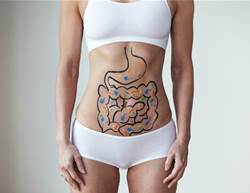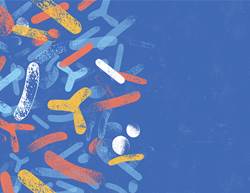It's likely either you or someone you love has a food intolerance. It's estimated at up to 25% of Australians now have one. And in some ways it's getting easier than ever to live with a food intolerance: we're all used to catering to dietary requirements at dinner parties and have seen the options in the supermarkets and restaurants grow.
But understanding food intolerance can be difficult and overwhelming. Read on for information about what they are, how to get tested and how to reduce your symptoms.
What's the difference between food allergy and food intolerance?
Food allergy and food intolerance are both types of food sensitivity which can cause illness, says the NSW Food Authority. But is there a difference? Yes, absolutely.
A food allergy is: an immune response to food. Minute amounts can trigger symptoms which range from hives and mild itching to life-threatening anaphylaxis. Lifelong avoidance is essential. Read about the most common food allergens.
A food intolerance: doesn't involve the immune system and isn't life threatening. Small quantities may be tolerated. Symptoms may include bloating, headaches, fatigue, anxiety and more. Sometimes you can reintroduce the food you’re intolerant to.
The most common food intolerances include
- milk and lactose (the sugar in milk)
- gluten
- wheat
- food preservatives
- sulphites
- naturally occurring compounds in foods such as caffeine
Food intolerances are also different from auto-immune responses, such as in coeliac disease.
Food intolerance testing and diagnosis
Getting to know trigger foods can be life changing and diagnosing such can be an overwhelming and long process. However, not all testing methods are accurate.
Hair testing
Hair testing is a probability test based on epigenetics rather than testing your immune response to foods.
Unfortunately, the same two samples will often produce different results so this method is not reliable.
Blood testing
Blood testing results can be useful when interpreted by a skilled professional. Practitioners should use your results as an assessment of your overall gut health/sensitivity and use them to map out a personalised elimination diet.
Unfortunately, histamine, salicylate and FODMAP sensitivity are not able to be tested via blood. For these sensitivities, elimination diet is best.
Elimination diet
In an elimination diet you remove possible trigger foods before reintroducing and observing any reactions. This is effective for some.
However, symptoms may be mild or delayed, making it difficult to pinpoint your trigger foods. Some get stuck in the elimination phase for months.
The holistic approach
With the following three step approach, there is better probability of success:
- Testing: Find trigger foods. Assess gut health and overall sensitivity.
- Guided elimination: Work with your practitioner to safely remove triggers.
- Repair, rebalance, reintroduce: Improve diet and lifestyle for optimum health – allowing more successful reintroduction. When symptom free and ready, we reintroduce foods.
The bottom line? If you think you have a food intolerance or allergy, see your GP to get a diagnosis. You may be referred to a gastroenterologist or dietitian for further help.
Living with food intolerances
It can be difficult to adapt to having food sensitivities. Reading labels, asking about allergens, buying substitute ingredients etc can be overwhelming. A good support network is essential.
Remember, avoiding trigger foods is a temporary solution to help you recover. Go easy on yourself, take it one step at a time and don’t beat yourself up if you cave to a sneaky croissant now and then. Take note of reactions, advise your practitioner and move on.
Beyond exclusion diets: exploring treatment options
Over the past 12 years as a nutritionist, I’ve helped thousands of people to recover from food sensitivity by following the holistic method above.
Some of the strategies I use are:
- Daily probiotics and prebiotic fibre: Probiotics are beneficial bacteria that may help alleviate symptoms, improve digestion and reduce sensitivity. Prebiotic fibre may help feed these healthy bacteria whilst also regulating bowel motions.
- Therapeutic foods: Certain foods such as papaya, kiwi, rocket and olives support digestion to help reduce symptoms, improve gut health and reduce sensitivity.
- Lifestyle modifications: Simple strategies such as mindful eating, getting good sleep and actually taking lunch breaks can have a huge impact on digestion and sensitivity. I also recommend deep breathing before meals which can help reduce stress, improve digestion and alleviate symptoms.
If you think you have a food intolerance, see your GP for help.
Discover more about managing food intolerances, optimising gut health, and exploring the latest advancements in allergy-friendly products at the Free From + Allergy Show in Sydney, 21 and 22 October 2023.










